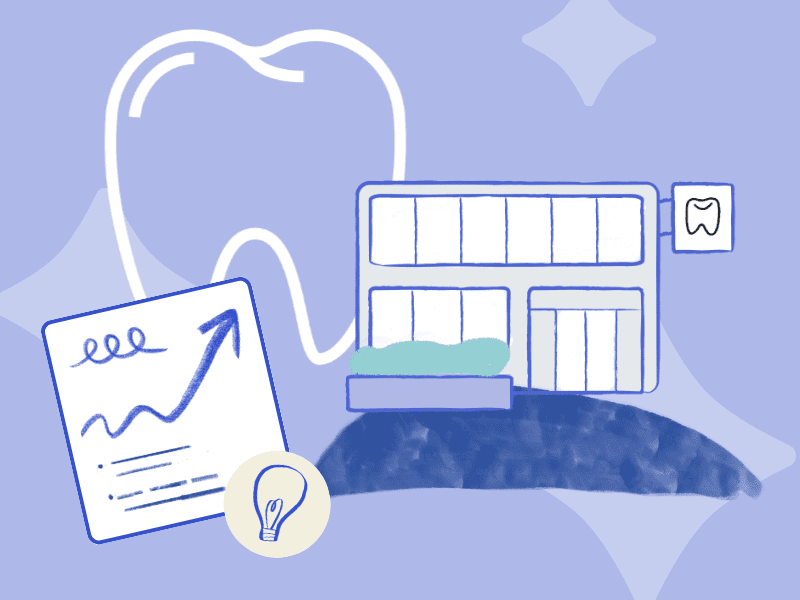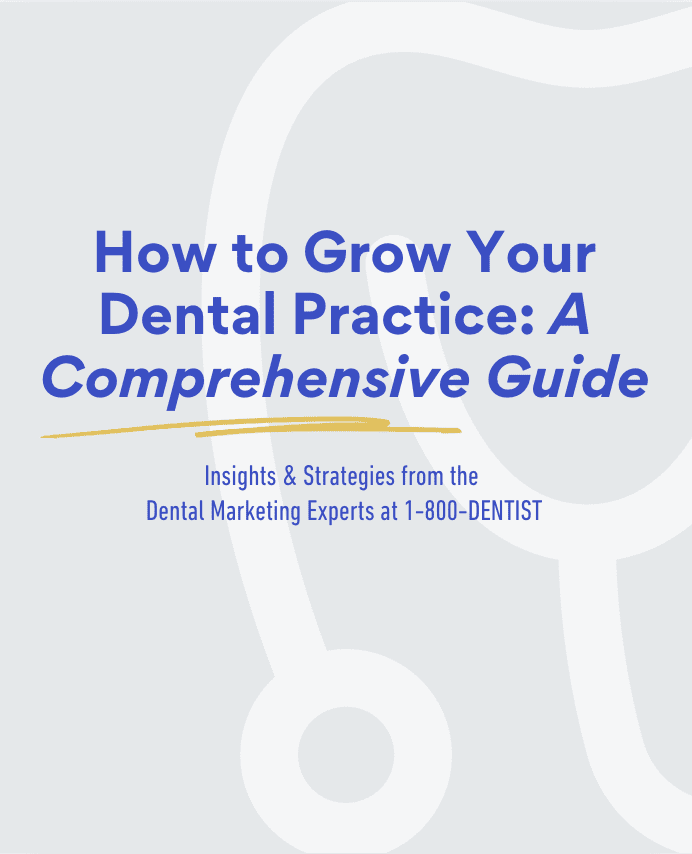As technology advances and our world becomes increasingly digitally focused, so too are patient expectations. To stay competitive and relevant, dental practices must adopt and embrace innovative technologies. Artificial intelligence (AI) is leading the charge in dental innovation–no longer a distant concept, but a driving force already reshaping the industry. From diagnostics to patient engagement, AI is transforming how practices operate and deliver care. In this blog, we explore the top AI trends in dentistry and how you and your team can leverage them to enhance patient care and grow your practice.
Artificial Intelligence Advancing Dental Imaging and Diagnostics
In the field of dental imaging and diagnostics, AI is propelling patient care forward faster than ever before. AI-enhanced tools and solutions enable dentists to detect early signs of decay, bone loss, and pathology with high accuracy. This allows dental professionals to identify dental issues faster and deliver more effective treatment for patients’ improved overall oral health.
Automated image analysis and interpretation
The AI-powered automation of image analysis and interpretation has become instrumental in many dental practices in mitigating diagnostic errors, improving early detection, and speeding up clinical workflows. AI can now detect pathologies like caries, periapical lesions, and periodontal bone loss in X-rays with accuracy that matches—or even surpasses—that of dental clinicians.
This is especially important because certain conditions can appear subtle on X-rays and are easy to overlook, especially in busy practices or when time for in-depth radiograph review is limited. Diagnostic interpretations can also vary significantly between practitioners, leading to inconsistencies in care and confusion for patients. AI helps eliminate that variability, promoting clearer diagnoses, increased trust, and higher treatment acceptance.
Key capabilities include:
- Identifying anatomical landmarks for treatment planning (e.g., in orthodontics and implantology)
- Segmenting teeth and structures in CBCT or panoramic images for more precise assessments
- Standardizing interpretations across multiple providers or locations

AI-optimized CBCT scans
AI can be used in optimizing cone-beam computed tomography (CBCT) scans, improving diagnostic quality and accuracy while minimizing patient exposure, outperforming human medical professionals. For instance, a 2022 study found that a fully automatic AI system, which evaluated a dataset of 4,215 patients, outperformed experienced radiologists while operating 500 times faster.1
AI-enhanced CBCT systems can:
- Enhance image clarity through intelligent reconstruction techniques
- Reduce radiation exposure without compromising diagnostic value
- Automate 3D segmentation of critical structures like nerves, sinuses, and roots
- Detect abnormalities such as cysts, root fractures, or impacted teeth with speed and accuracy
Real-time decision support
AI systems are increasingly capable of providing real-time support during image review, enabling smarter, safer, and faster decision-making:
- Flagging urgent or abnormal findings for quicker triage
- Recommending additional scans, referrals, or treatments based on patient history and image data
- Integrating with EHRs to deliver context-aware suggestions
Training & skill augmentation
AI tools are not just for diagnosis—they also play a vital role in enhancing professional development and consistency across skill levels:
- Simulated diagnosis platforms for dental student training
- Second-opinion tools for general dentists
- Standardized image interpretation across providers and locations
Tip: Integrate AI tools into your imaging workflow to assist with faster, more accurate diagnostics and reduce variability, especially for high-volume or multi-location dental practices.

Dental Treatment Planning with Artificial Intelligence
AI in dentistry has elevated treatment planning, transforming it into a faster, smarter, and more precise process. By analyzing vast amounts of clinical data—including patient case histories, radiographs, intraoral scans, and diagnostic images—AI systems can generate tailored treatment plans with high efficiency, speed, and accuracy. AI’s enhancement of dental treatment processes greatly reduces the manual labor required to complete the same tasks. In fact, a 2025 study found that AI processed images 79 times faster than human readers, suggesting significant time savings in workflows.2
These tools support dentists in creating comprehensive, data-driven treatment plans that align with individual patient needs and clinical best practices. They can also help present more predictable outcomes, giving patients greater confidence in the proposed treatment path, ultimately increasing case acceptance rates.
Many dental AI systems offer visual simulations or side-by-side comparisons that clearly illustrate potential results. This allows patients to see what to expect, which can demystify complex procedures, encourage informed decision-making, and reduce anxiety around procedures.
In addition, AI can identify subtle patterns or early indicators that the human eye might miss. Whether it’s optimizing implant placement, designing aligners, or forecasting orthodontic movement, AI empowers dental practices to plan with greater precision and speed.
Tip: Use AI-enhanced treatment planning tools to streamline consultations, reduce chair time, and build patient trust through realistic simulations and transparent, data-backed recommendations.
Effective Dental Practice Management and Patient Communications with AI
AI isn’t just transforming diagnosis and treatment—it’s also revolutionizing how dental practices manage operations and communicate with patients.
AI-powered chatbots and virtual assistants can take over routine tasks like appointment booking and rescheduling, answering frequently asked questions, and delivering post-op care instructions. Automating these tasks gives your front desk staff more time to focus on higher-value, client-facing interactions.

Smart scheduling tools can also automate patient communications, reducing no-shows and easing administrative workload. These tools can analyze key data points, such as:
- Patient preferences and appointment history
- Treatment types and provider availability
- Chair time optimization and room utilization
- No-show patterns and peak hours
They can even automatically fill last-minute cancellations, ensuring your schedule stays efficient and productive.
Predictive analytics takes things a step further, helping forecast patient behaviors like overdue recall visits or likely appointment no-shows so your team can proactively follow up with patients.
Tip: Use AI communication tools to personalize outreach across text, email, and phone. Tailored messages boost response rates and elevate the patient experience.
If you’re looking for an automated tool that empowers dental practices to effectively manage patient relationships and communications, check out PatientActivator, our AI-powered platform. With automated review requests, Google listings optimization, and automated texts and emails, you can deliver exceptional customer experiences and foster strong relationships.
How to Adopt New AI Technologies for Your Dental Practice
Successfully integrating AI into your dental practices’ workflows isn’t just about choosing the right technology; it also requires thoughtful management and ensuring buy-in across your entire team. Even if you’re eager to integrate AI into all aspects of your practice, avoid introducing major overhauls all at once, as this will likely cause resistance and confusion among your staff.
Instead, integrate AI into your practice in phases. Start by using scalable tools like AI-enhanced appointment scheduling, virtual assistants for patient communication, or diagnostic support software before adopting full-platform AI systems.

Just like AI is rapidly transforming the dental industry, 1-800-DENTIST is embracing its potential to elevate our services and including AI-powered features are a key part of our roadmap this year. With PatientActivator, you can automatically generate review requests and send tailored, error-free responses—all with just a click. And this summer, our PatientLeads Program is getting an AI upgrade to help route the most qualified new patient calls directly to your practice.
As you explore different vendors, look beyond flashy features and focus on critical factors such as:
- HIPAA compliance and data security
- Ease of integration with your existing practice management software
- Onboarding support and staff training resources
- Ongoing customer service and updates
Make sure to involve your team early in the process so they’re primed for the upcoming changes. Invite feedback from dentists, hygienists, and front desk staff to identify pain points and ensure the selected solutions align with their daily workflows.
Tip: Pilot new AI tools with a single team or location. Monitor metrics like time savings, staff satisfaction, and patient feedback to measure ROI and comfort levels before expanding to other practices. This approach allows for smoother adoption and helps refine your strategy as you scale.
Stay Ahead of the Competition with Artificial Intelligence for Dentists
AI in dentistry is no longer a novel concept–it’s actively reshaping and evolving how modern practices operate and deliver care. As such, integrating AI into your dental practices is essential to remain competitive in the market and achieve long-term growth. While keeping up with the latest AI trends can feel overwhelming at times, the benefits that your practice can gain are well worth the investment.
From automated image analysis to enhancing CBCT scan quality, today’s AI solutions offer scalable ways to improve clinical outcomes and streamline workflows. By streamlining routine tasks, these tools free up valuable time for front desk staff, hygienists, and dentists to focus on more complex, patient-centered care.
Staying on top of emerging innovations empowers you to provide the best care possible for your patients as dental care becomes increasingly digital-focused.




